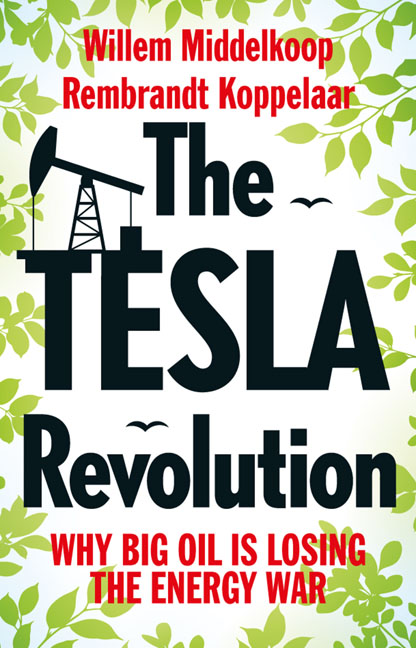Book contents
- Frontmatter
- Contents
- Prologue
- Special Introduction
- Chapter 1 The Tesla Revolution
- Chapter 2 A History of Fossil Fuel Dominance
- Chapter 3 The Petrodollar and the Geopolitics of Oil
- Chapter 4 Peak Oil Revisited: The End of Cheap Oil
- Chapter 5 Climate Change and the World of Energy
- Chapter 6 What Will the Energy Mix of the Future Be?
- Epilogue
- Appendix
- References Prologue
- Register
Special Introduction
Published online by Cambridge University Press: 12 December 2020
- Frontmatter
- Contents
- Prologue
- Special Introduction
- Chapter 1 The Tesla Revolution
- Chapter 2 A History of Fossil Fuel Dominance
- Chapter 3 The Petrodollar and the Geopolitics of Oil
- Chapter 4 Peak Oil Revisited: The End of Cheap Oil
- Chapter 5 Climate Change and the World of Energy
- Chapter 6 What Will the Energy Mix of the Future Be?
- Epilogue
- Appendix
- References Prologue
- Register
Summary
This book is about the energy revolution in which Tesla Motors plays a significant role. The name of the company honors Nikola Tesla, one of the greatest engineers and inventors ever.
Who was Nikola Tesla?
Nikola Tesla, born in 1856, was a Serbian-American inventor, electrical engineer, mechanical engineer, physicist, and futurist best known for his contributions to the design of the modern alternating current (AC) electricity supply system.[1]
In 1875, Tesla started at Austrian Polytechnic in Graz, Austria, on a Military Frontier scholarship. Tesla claimed that he worked from 3 a.m. to 11 p.m., including Sundays and holidays. After his father's death in 1879, Tesla found a package of letters from his professors to his father, warning that unless he was removed from the school, Tesla would die from overwork. During his second year, Tesla came into conflict with Professor Poeschl over the Gramme dynamo, when Tesla suggested that commutators were not necessary. At the end of his second year, Tesla lost his scholarship and became addicted to gambling.[2] He never graduated from the university and did not receive grades for the last semester. In December 1878, Tesla left Graz and severed all relations with his family to hide the fact that he had dropped out of school.[3]
In 1881, Tesla moved to Budapest to work under Ferenc Puskás at a telegraph company, the Budapest Telephone Exchange. Within a few months Tesla was elevated to the chief electrician position. During his employment, Tesla made many improvements to the central station equipment and claimed to have perfected a telephone repeater or amplifier, which was never patented nor publicly described.[2]
In 1882, Tesla moved to France where he began working for the Continental Edison Company, designing and making improvements to electrical equipment. In June 1884, he emigrated to New York City in the United States.[4] He was hired by Thomas Edison to work at his Edison Machine Works on Manhattan's Lower East Side. Tesla's work for Edison began with simple electrical engineering and quickly progressed to solving more difficult problems.[5]
Tesla was offered the task of completely redesigning the Edison Company's direct current generators. In 1885, he said that he could redesign Edison's inefficient motors and generators, making an improvement in both service and economy.
- Type
- Chapter
- Information
- The Tesla RevolutionWhy Big Oil is Losing the Energy War, pp. 13 - 26Publisher: Amsterdam University PressPrint publication year: 2017



